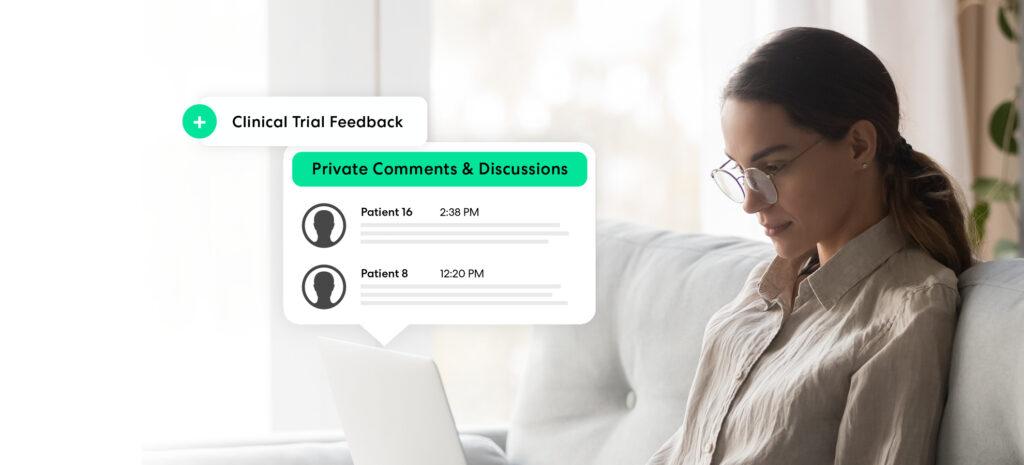Article updated April 2023.
The success or failure of a clinical trial hinges on many factors, but one of the most critical is patient recruitment. According to research, an incredible 85% of clinical trials fail to meet their recruitment goals – putting study data quality and development timelines at risk. Inefficient trial recruitment efforts can add almost 11 months of delays for late-stage trials, driving up operational costs and delaying time to market, not to mention indications or implications of failure regarding patient centricity.
Additionally, because trials are often limited to big cities, patients in rural areas may be disproportionately impacted or overlooked as prospects for enrollment goal achievement. Logistical accessibility issues to the site, such as distance, frequency, and associated costs, may dissuade participants from signing up and staying committed.
Knowing that robust patient recruitment contributes to developing better drugs and better patient options, not to mention the acceleration benefits to enterprises that thrive on successful pharmaceutical innovation and commercialization, how can pharmaceutical organizations improve patient recruitment in clinical trials? And how can technology make the recruitment process even easier?
Our clients reach their patient enrollment goals faster. Ask us how.
How can pharma companies improve patient recruitment?
Effective trial recruitment is difficult, but failure to recruit effectively can result in costly delays or even outright failure. However, many Within3 clients optimize their recruitment efforts through the Within3 insights management platform. How?
- Expand the participant pool by activating communities, populations, and clinics outside of the standard playbook by allowing them to contribute in a hybrid environment regardless of location.
- Use tools, tactics, and strategies that generate the highest levels of clinician engagement. While not precisely unique to clinical trials, Withine3 clients regularly report better KOL engagement levels and acceleration of goal achievement by months compared to legacy engagement models.
- Use a platform that works for all participants – especially prospective patient enrollees – with what they need, when they need it, in a way and time that works for them, such as Within3’s hybrid virtual engagement and insights management platform.
Why is clinical trial recruitment important?
Recruitment and enrollment are time-consuming – so much so that these activities often cause missed trial deadlines. According to the National Center for Biotechnology Information:
“Insufficient or untimely patient recruitment into [randomized clinical trials] has serious consequences. The trial length may need to be extended, increasing resource use and costs. Lengthy trials delay the availability of potentially beneficial treatments to the public. The integrity and validity of the study also rely on adequate sample size. If the sample size is not achieved, there is an increased chance of committing a type II error (e.g., you are more likely to find no difference between treatments when one actually exists). The trial may have to be abandoned, and the results may not be publishable.”
Improving patient recruitment is one way that pharmaceutical companies can avoid such costly delays and accelerate the time to market for new drugs. For safety reasons, the drug development process includes clinical trials that take place over four phases, each with a different purpose:
- Phase I trials typically include 20 to 80 healthy volunteers to test the drug’s safety and side effects and determine the proper dosage
- Phase II trials include 100 to 300 people who have the disease or condition the drug is designed to treat, to test the medication’s efficacy
- Phase III trials are done with a large group of people (300 to 3,000) for further safety and efficacy testing
- Phase IV trials are conducted once the drug obtains FDA approval and typically include several thousand volunteers from diverse populations who have the condition or disease
Even when executed perfectly, this process can still take several years, or even decades, to complete.
Why do studies fail to hit their recruitment targets?
There are numerous reasons why studies might fail to hit their recruitment targets. A recent study published in the National Library of Medicine identified 29 different reasons for recruitment failure. Chief among those reasons is poor engagement among trial sites, recruiters, and trial teams:
“Many interviewees had encountered challenging collaborations with colleagues from their own department, other departments within the hospital or other hospitals, which significantly affected their ability to recruit trial participants. They also described the perceived hierarchical relationships among various health care professionals as well as ambition and ego of individuals which prevented trial implementation as planned.” – Briel, Elger, et al
Effectively understanding prospective enrollees while engaging trial sites, teams, and recruiters is essential if a study is to meet its recruitment goals, and ultimately prove successful.
Moreover, patients know best about the physical practicalities of their treatment. Looking to patients to provide this knowledge has the following benefits, including for clinical trial recruitment:
- Patient virtual advisory boards help avoid potential oversights, such as people with chronic fatigue illnesses being asked to travel to a remote site repeatedly
- Full patient consultation around trial design helps boost engagement, retention, and recruitment rates, resulting in a higher-quality patient data set
- Co-design of the trial process, including patient selection and consultation with advocacy groups, leads to increased diversity in previously under-represented groups
RELATED CONTENT
Patient retention and recruitment tips for clinical trials
Recruiting and enrolling patients in clinical trials can be long and costly. Finding the optimal candidates and prompting them to enlist can take months or even years. Clinical trial enrollment failure rates can be astronomically high, delaying commercial opportunity and patient access when time is precious. Once a patient has signed up, retention rates can waver. Most trials will plan for a 30% patient drop-out rate. But that rate can go much higher, especially if you fail to plan your clinical trial properly.
To help address these challenges, we provide six actionable tips on enhancing your clinical trial recruitment and retention plan.
How can pharma companies improve patient recruitment?
Effective trial recruitment is difficult, but as we’ve seen, failure to recruit effectively can result in costly delays or even outright failure. Trial sponsors, healthcare organizations, patient advocacy groups, and learning institutions tackle this challenge by developing innovative ways to overcome recruitment barriers.
For example, the patient outreach recruitment team at the South Carolina Clinical & Translational Research (SCTR) Institute is testing an approach whereby patients are eligible by default to learn about clinical trials that might work for them. While patients can also choose not to be contacted, SCTR based this new tactic on patient feedback indicating more people would consider participating in trials if they knew about suitable opportunities. By working with an affiliated health system, SCTR increased the number of potential trial participants from about 50,000 to 1.7 million. This approach also ensures the pool of participants better reflects community demographics.
Other trial sponsors are looking to technology to help solve tricky issues around patient recruitment in clinical trials. Many Within3 clients use their insights management platform to optimize recruitment efforts in various ways. One global pharmaceutical organization was looking to recruit 700 patients for a phase-3 randomized breast cancer trial slated to run across multiple countries simultaneously. The client company saw this trial as an opportunity to improve outcomes for patients with hormone receptor-positive HER2-negative breast cancer – the most common form of the disease.
Breast cancer is a historically challenging area for patient recruitment. Resource scarcity, patient concerns around side effects, and lack of awareness of trial opportunities contribute to lower-than-average recruitment rates. According to a recent study published in BMC Women’s Health, just 2–3 % of all breast cancer patients participate in clinical trials throughout the course of their treatment.
The client wanted to tackle one of the primary reasons for recruitment failure: poor site engagement. Using the Within3 insights management platform’s virtual asynchronous engagement capabilities, the client team could quickly train and onboard sites across multiple locations. Live and in-platform translation functionality meant all participants could engage in their native language asynchronously at a time and place that worked for them. The result: extraordinarily engaging live meetings with over 80% of training completion on the platform.
Our client met their recruitment targets earlier than expected by ensuring trial sites were well-trained and adequately engaged. Since 85% of clinical trials fail to meet their recruitment goals, what the client team achieved via the Within3 platform was remarkable.






